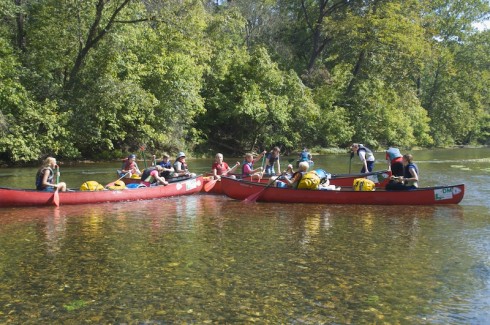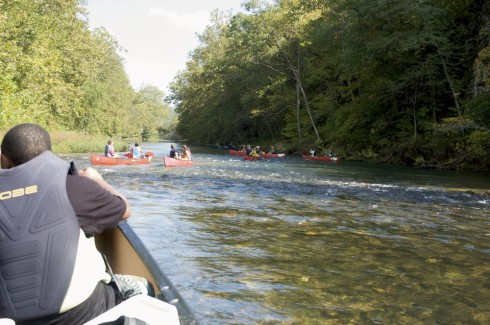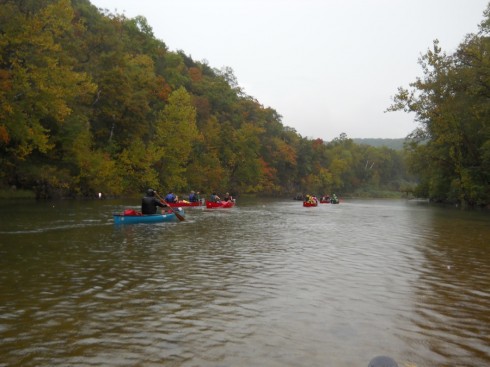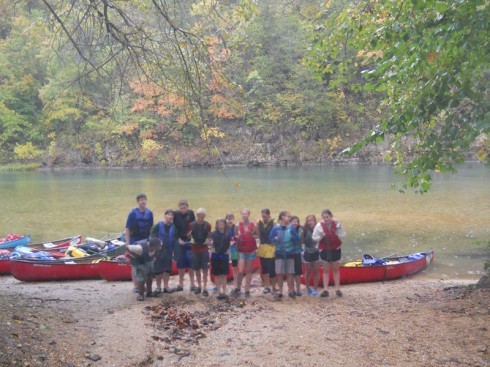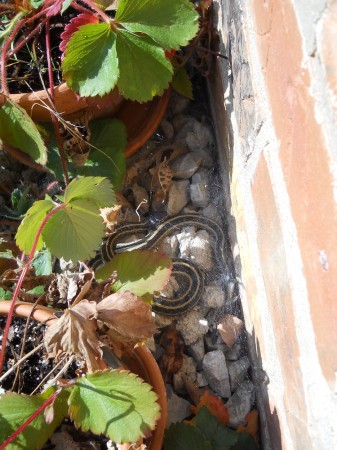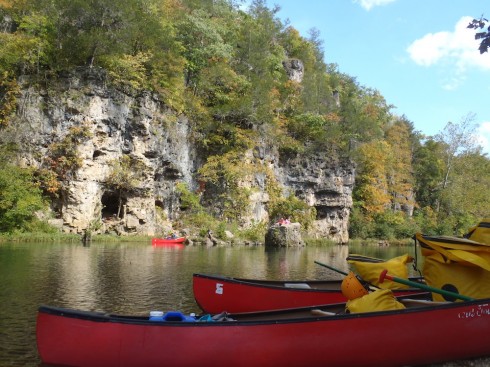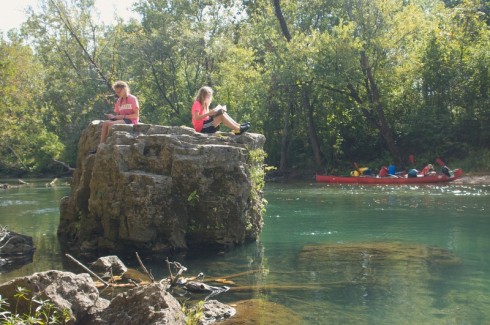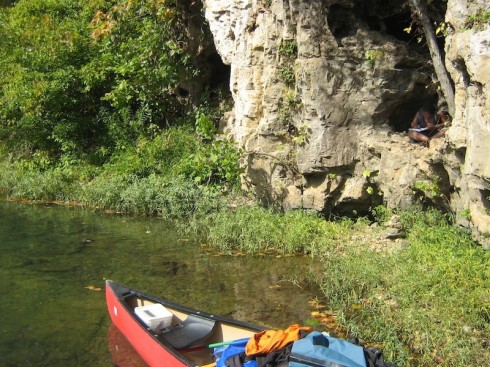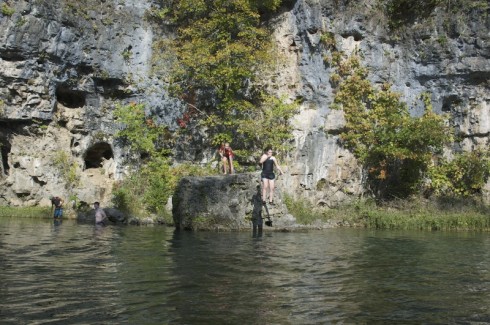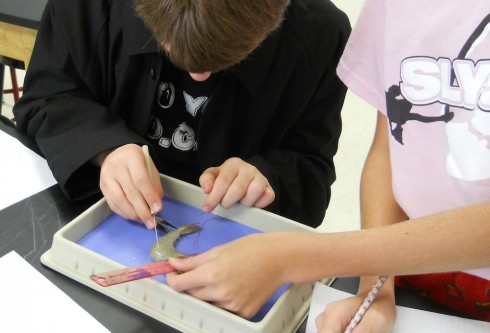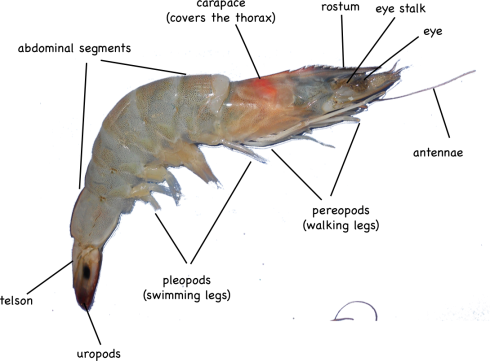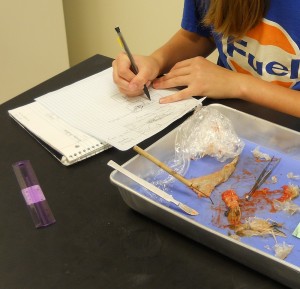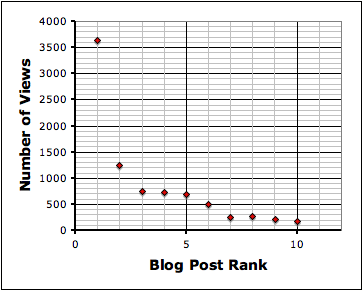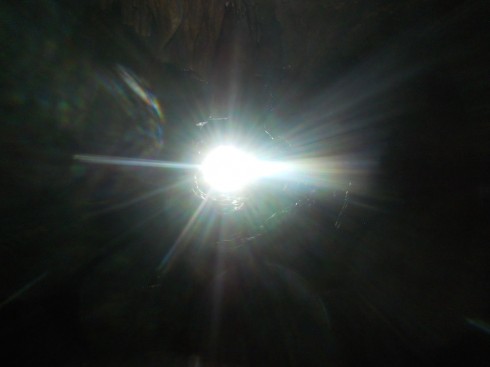
They took us into a sculpted, limestone cavern they called “Twins Cave”. The entrance was large, but, for those with the predilection, there were narrower passageways that required crawling, wiggling, and a definite lack of claustrophobia.
Apart from the wonderful speleotherms, the cave was home to some charismatic fauna.
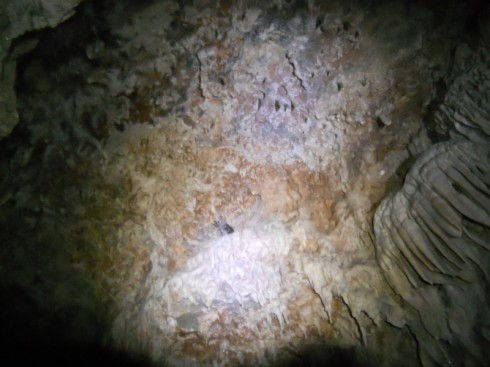
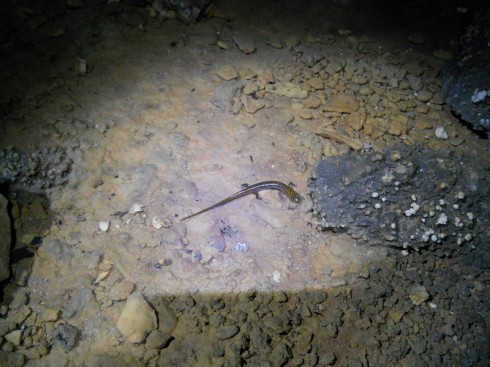
Though I did not capture any pictures of bats, they flew around us, and we found evidence of their presence just under the cloying red mud that covered most of the cave floor.
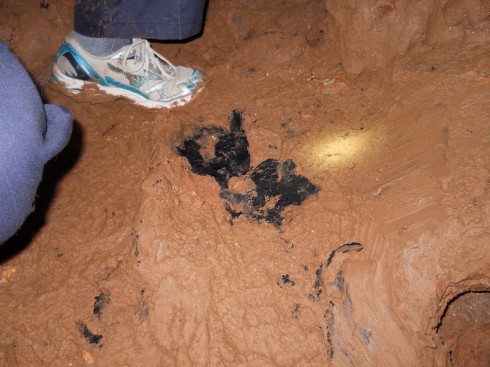
The limestone precipitated cave formations were quite beautiful: fluted, cathedral-organ-like stalactites;
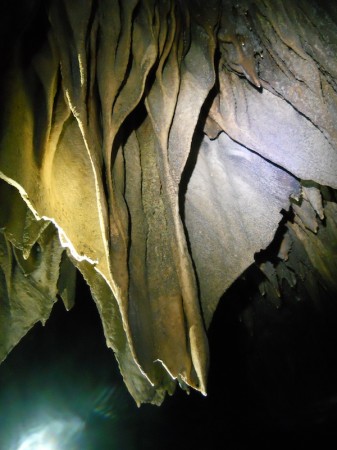
thin, precise straws hanging from the ceiling:
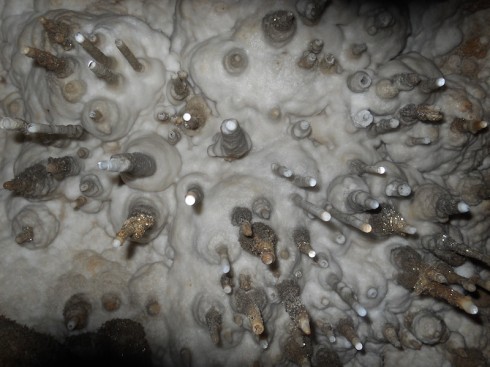
The juxtaposition of the beauty above us and the mess beneath our feet brought into focus the idea that happiness is not an absolute thing, but rather comes from the difference between misery and joy.
(Eminence Immersion)
